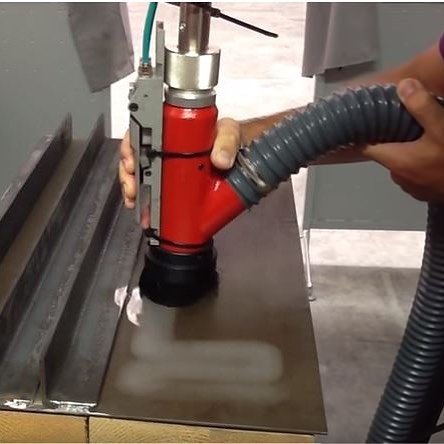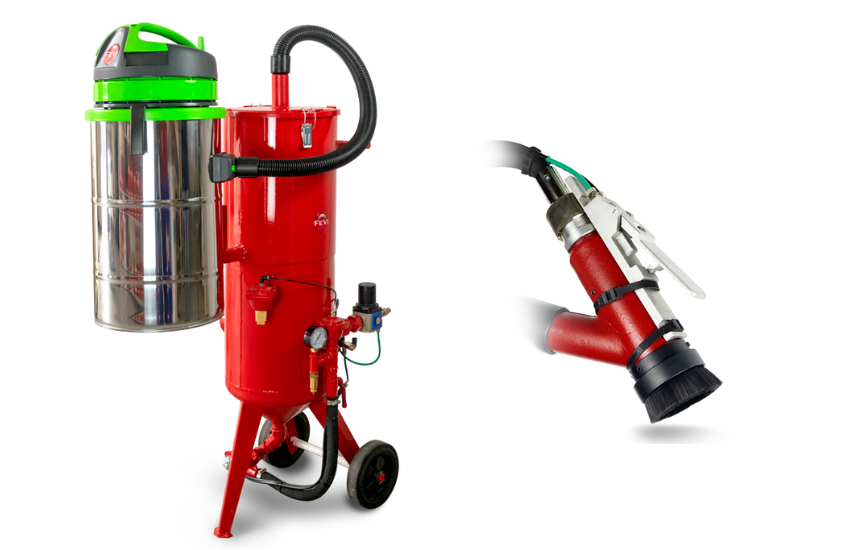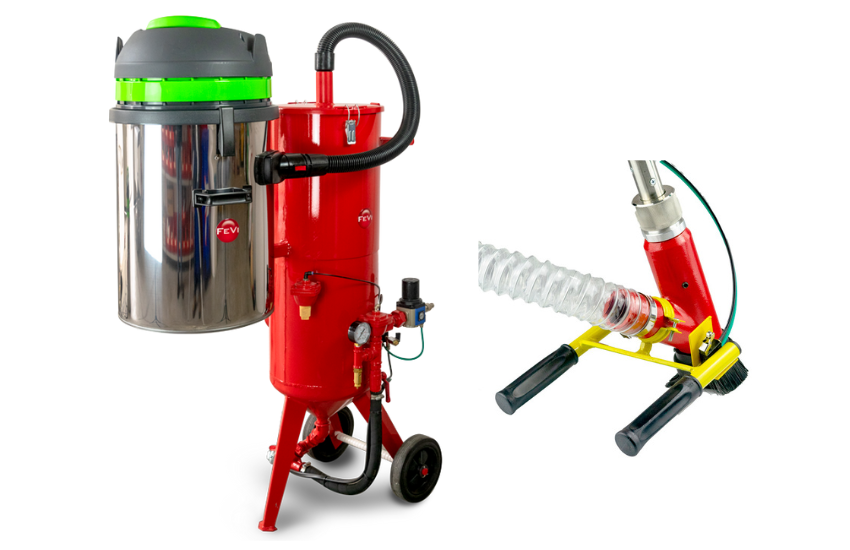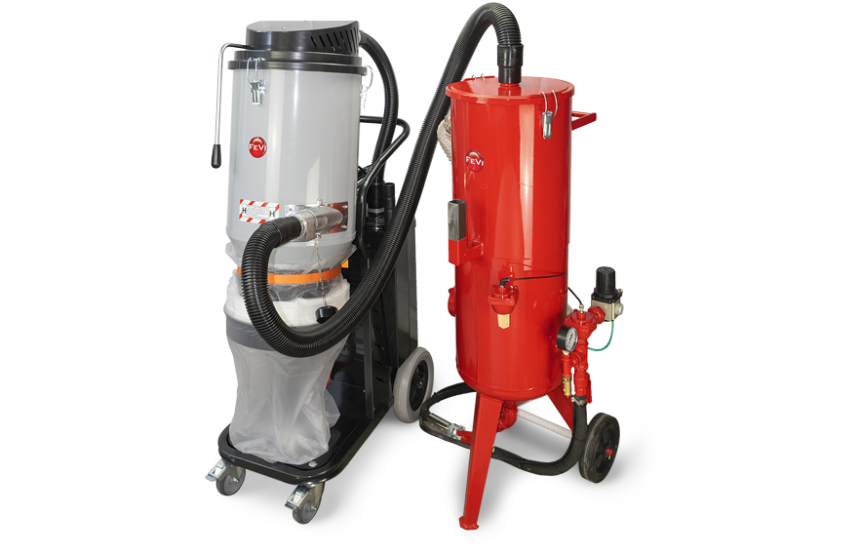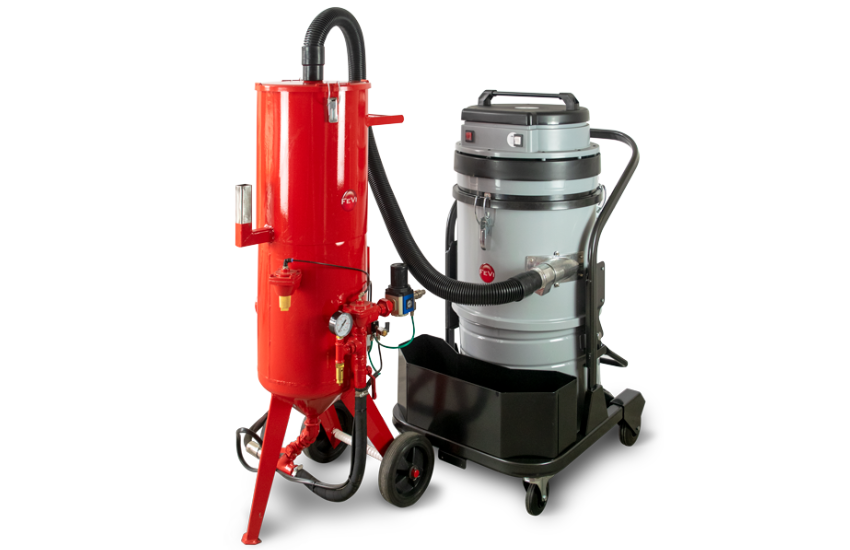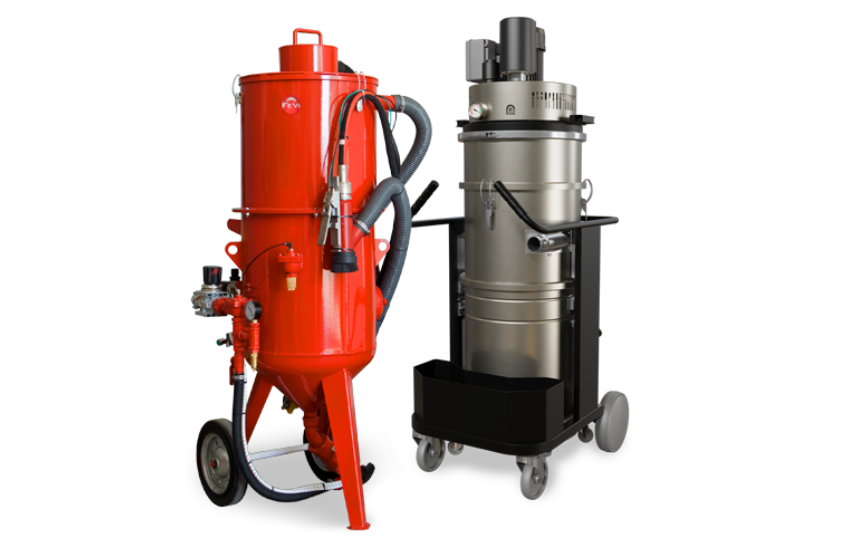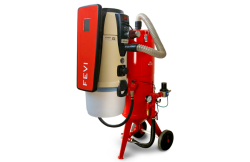Dust-free sandblasting is an innovative technique in the field of surface treatment that is gaining popularity due to its numerous advantages. This methodology allows for clean surfaces ready for further processing without the issues associated with dust. This is particularly important in work environments where dust can pose health and safety risks to operators. Dust-free sandblasting uses advanced equipment such as vacuum sandblasters, recovery sandblasters, suction pressure sandblasters, and recycling sandblasters to ensure an efficient and safe sandblasting process.
In this article, we will explore in detail the concept of dust-free sandblasting, the various types of sandblasters used, the advantages, and the applications of this technique. We will also discuss how to choose the right equipment for your needs and provide useful tips to optimize the dust-free sandblasting process.
What is Dust-Free Sandblasting?
Dust-free sandblasting is a surface cleaning and preparation process that uses a mixture of compressed air and abrasives to remove paint, rust, scale, and other contaminants. The distinctive feature of this method is the absence of dust generated during the process, thanks to integrated suction and recovery systems in the sandblasters.
How Does Dust-Free Sandblasting Work?
The dust-free sandblasting process combines the use of abrasives with the simultaneous suction of dust particles and debris generated. This is made possible by specialized equipment such as vacuum sandblasters and recovery sandblasters, which are designed to capture and contain dust during the operation. The suction pressure sandblaster uses a pressure system to shoot abrasives onto the surface and a suction system to immediately collect the debris.
Types of Sandblasters for Dust-Free Sandblasting
Vacuum Sandblaster
The vacuum sandblaster is a machine that combines sandblasting with a powerful suction system. This type of sandblaster is ideal for jobs where it is crucial to keep the work area clean and free of dust. The vacuum sandblaster is often used in industrial environments and for infrastructure maintenance.
Recovery Sandblaster
The recovery sandblaster is equipped with a system that recovers and reuses the abrasive, reducing operational costs and minimizing waste. This type of sandblaster is particularly efficient in terms of material consumption and environmental impact. For more details on this type of sandblaster, you can visit the recovery sandblaster .
Suction Pressure Sandblaster
The suction pressure sandblaster combines the efficiency of pressure sandblasting with an integrated suction system. This allows for rapid removal of paint and rust without generating dust in the work environment, enhancing safety and cleanliness. An example of this type of sandblaster is available on the suction pressure sandblaster .
Recycling Sandblaster
The recycling sandblaster uses a system that recirculates the abrasive, allowing the same material to be reused multiple times. This type of sandblaster is ideal for intensive applications where cost reduction and operational efficiency are crucial. More information can be found on the recycling sandblaster .
Advantages of Dust-Free Sandblasting
Health and Safety
One of the main advantages of dust-free sandblasting is the reduction of health risks associated with dust exposure. Dust generated during traditional sandblasting can contain hazardous particles that, if inhaled, can cause respiratory problems and other illnesses. Dust-free sandblasting minimizes this risk, creating a safer work environment.
Operational Efficiency
Dust-free sandblasting allows for quicker and more efficient surface cleaning and preparation. Vacuum and recovery sandblasters reduce the time required for post-operation cleaning, allowing operators to focus on other tasks.
Environmental Friendliness
Dust-free sandblasting reduces the environmental impact of the sandblasting process by minimizing the dispersion of dust into the environment. Additionally, the use of recovery and recycling sandblasters helps reduce abrasive consumption and waste production.
Applications of Dust-Free Sandblasting
Industrial Maintenance
Dust-free sandblasting is widely used in industrial maintenance for cleaning and preparing metal surfaces, steel structures, and other materials. Vacuum and suction pressure sandblasters are particularly effective in these contexts, ensuring a safe and clean work environment.
Restoration and Conservation
In the field of restoration and conservation, dust-free sandblasting is used to gently clean historical surfaces without damaging the underlying materials. This method is particularly useful for restoring historical buildings, statues, and other works of art.
Surface Preparation for Painting
Dust-free sandblasting is ideal for surface preparation before painting. By completely removing old paints, rust, and other contaminants, it provides a clean surface ready for the application of new paints or coatings. For an idea of the equipment that can be used, visit the Pressure Blaster .
How to Choose the Right Dust-Free Sandblaster
When choosing a dust-free sandblaster, it is important to consider various factors, including the type of surface to be treated, the volume of work, and the available budget. Vacuum sandblasters are ideal for jobs requiring high cleanliness and dust control, while recovery and recycling sandblasters are more suitable for intensive and long-term applications. Learn more about the different models of sandblasters available by visiting the Pressure 4.0 .
Tips for Optimal Use of Dust-Free Sandblasting
- Equipment Maintenance: Keep the sandblasters in good condition with regular maintenance to ensure optimal performance and long lifespan.
- Abrasive Selection: Use high-quality abrasives specific to the type of surface to be treated and the desired application.
- Operator Training: Ensure operators are properly trained in the use of sandblasters and safety procedures.
- Work Environment: Properly prepare the work area to avoid contamination and ensure a safe and clean operation.
Conclusion
Dust-free sandblasting represents a significant advancement in surface treatment, offering numerous advantages in terms of health, safety, efficiency, and environmental friendliness. With the right equipment and appropriate techniques, it is possible to achieve excellent results in a wide range of industrial and restoration applications. Investing in high-quality sandblasters such as vacuum, recovery, suction pressure, and recycling models can make a difference in the quality and safety of the work performed.



